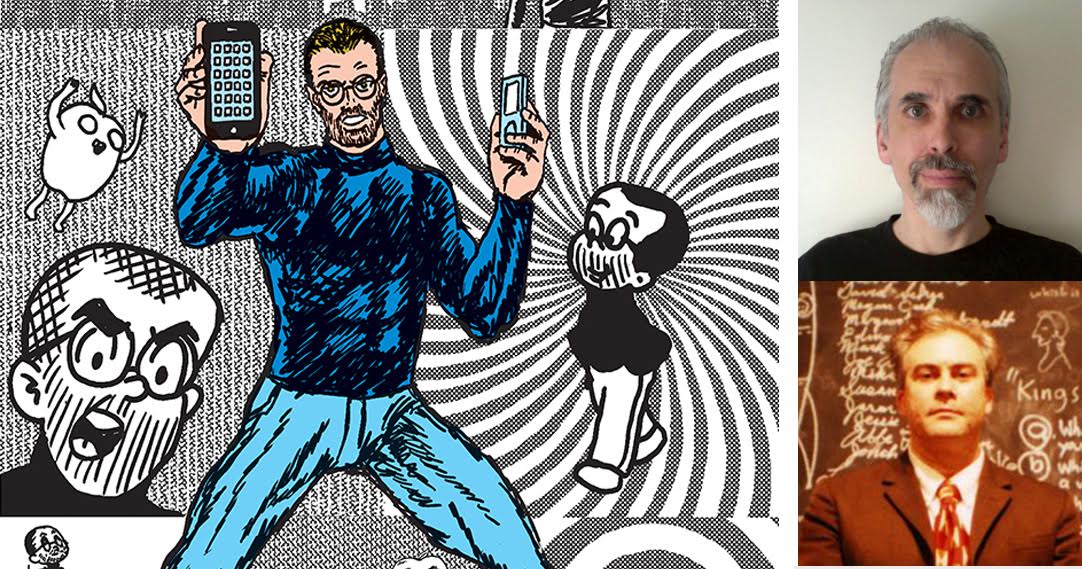A weekly symposium for artist/writers working in various text-image forms: comics, picture-stories, animation, etc. at which to present and critique current work. The symposium will examine new ideas for the distribution of print and electronic work that move beyond the existing models of publishing and advertising. We will re-examine the relationship between readers and autographic writers. Emphasis will be placed on self-initiated work and the development of a self-sustaining economic model for such work. Meetings will be facilitated by a rotating group of practitioners and guest speakers. The symposium will offer an ongoing place to learn and think about the traditions and future of text-image work.
We meet at Parsons The New School in New York City at 7PM. Locations specified below and on the NYCPSS website. All events are free and open to the public.

Jan. 26, 2016 – Kim Deitch on a work in progress
7-9 PM
Klein Conference Room, A-510, 66 w. 12th street
Kim Deitch will discuss and show samples of the book he’s been working on for the past three years. It’s a pseudo autobiography in that almost nothing in it is true. The over-riding theme is reincarnation — a concept that the author has no firm convictions about one way or the other. Bio. Kim Deitch has a reserved place at the first table of underground cartoonists. The son of UPA and Terrytoons animator Gene Deitch, Kim was born in 1944 and grew up around the animation business. He began doing comic strips for the East Village Other in 1967, introducing two of his more famous characters, Waldo the Cat and Uncle Ed, the India Rubber Man. In 1969 he succeeded Vaughn Bodé as editor of Gothic Blimp Works, the Other’s underground comics tabloid. During this period he married fellow cartoonist Trina Robbins and had a daughter, Casey. “The Mishkin Saga” was named one of the Top 30 best English-language comics of the 20th Century by The Comics Journal, and the first issue of The Stuff of Dreams received the Eisner Award for Best Single Issue in 2003. Deitch remains a true cartoonists’ cartoonist, adored by his peers as much as anyone in the history of the medium.

Feb. 2, 2016 -Monroe Price – An Image Dump: Sleeping Reputations and Narratives of Meaning from Five Decades of Collecting
7-9 PM
Orozoco Room, A-712, 66 W. 12th Street
This is a speed tour through a wide variety of images, mostly works on paper: children’s drawings fromn a Japanese interment camp in China, examples of Kitaj’s “autobiography” drawn from screened book covers, commissioned portraits of US soldiers in Iraq found in Baghdad’s Green Zone, works of obscure artists who need reputational upgrading (large apocalyptic woodcuts. WWII ink drawings., 1920s cross country travelogue Works illustrate transformations in Russian propaganda policies, the output of a famous Mexican print workshop and transformations in Hungarian communist aesthetic practice) Professor Price is on the faculty at the University of Pennsylvania’s Annenberg School for Communication and at Cardozo Law School in New York. The work has been assembled over 50 years of marriage to the art historian Aimée Brown Price (who has admitted to being not so adventurous as her husband nor so aesthetically evolved).

Feb. 9, 2016 – Archie Rand on The 613
7-9 PM
Room M 101 (Bark room), 2 West 13th St., lobby level
Rand discusses his five-year long project, The 613 — the visual transformation of every one of the 613 mitzvahs into a painting. Archie Rand, born 1949, is an artist from Brooklyn, New York. Rand’s work as a painter and muralist is displayed around the world, including in the collections of the San Francisco Museum of Modern Art, the Art Institute of Chicago, the Victoria and Albert Museum in London, the Bibliothèque Nationale de France in Paris, and the Tel Aviv Museum of Art. There have been over 100 solo exhibitions of his work. He has published collaborative work with poets Robert Creeley, John Ashbery, Clark Coolidge, David Plante John Yau, David Lehman and Jim Cummins. He was awarded, among numerous honors, the Achievement Medal For Contributions to the Visual Arts by the National Foundation for Jewish Culture and he received the Guggenheim Foundation Fellowship. Formerly the Chair of the Department of Visual Arts at Columbia University he is currently the Presidential Professor of Art at Brooklyn College, CUNY. His home and studio are located in Brooklyn.
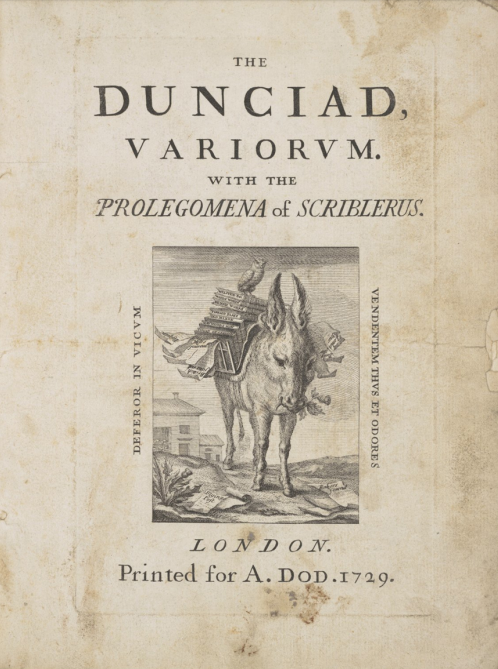
February 16 -Paula McDowell, Making and Breaking the Category of Ephemera: The Eighteenth Century as Test Case
7-9 PM
Room M 101 (Bark room), 2 West 13th St., lobby level
“Ephemera” is not a thing but a classification. The category of “ephemera,” like the category of “Literature,” is not transparent, timeless, or universal, but a classification, existing in history, that has done and continues to do powerful rhetorical, practical, ideological, and disciplinary work. This talk begins by suggesting how collectors, librarians and archivists, literary scholars and others have defined “ephemera” since the 1960s. It then steps back in time to the eighteenth-century in Britain, arguing that the categories of “ephemera” and “Literature” were reciprocally constructed as part of an attempt to control the spread of print. For satirists such as Alexander Pope and Jonathan Swift, “ephemera” was not so much a logical or practical category as a smear word that could be applied to just about anything (from weighty folios to broadsides and newspapers). But today, new digital resources are powerfully destabilizing centuries-old categorical distinctions such as “ephemeral” vs. “enduring” works. Understanding eighteenth-century authors’ classification schemes and labors can help us to think through the challenges and opportunities we face as we construct and deconstruct “ephemerality” in the digital age. Caption for image: “Dunciad Variorum (1729), title page vignette” Paula McDowell is Associate Professor of English at New York University, where she teaches eighteenth-century British literature and media and the History of the Book. She is the author of The Women of Grub Street: Press, Politics and Gender in the London Literary Marketplace, 1678-1730 (Oxford, 1998), Elinor James: Printed Writings (Ashgate, 2005), and articles on models of the Enlightenment, the epistemology of ephemera, the eighteenth-century novel, and many other topics. Her latest book, The Invention of the Oral: Print Commerce and Fugitive Voices in Eighteenth-Century Britain(Chicago, 2016), examines the oral/literate binary as a heuristic — a tool for understanding that itself has a history — and argues that the concept of “oral culture” was in fact a back formation of the explosion of print commerce. Continuing this interest in the dynamic relationship between media forms, she is currently working on a study of the multi-media satirist and political commentator John “Orator” Henley and the origins of public debating societies in Britain.
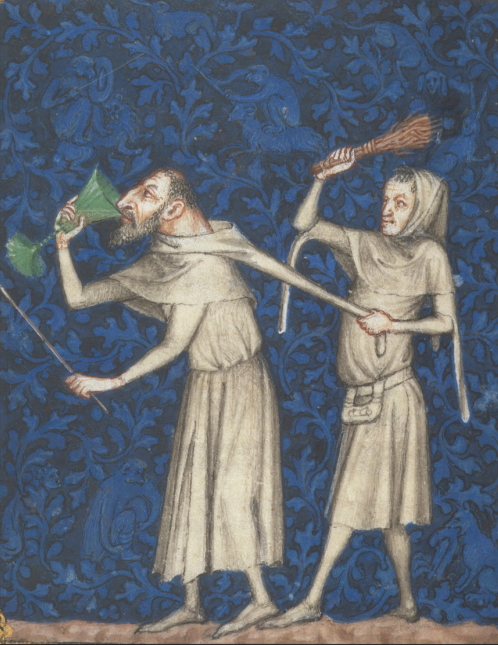
February 24 (Special Weds. date) – Sara Lipton on Dark Mirror: The Medieval Origins of Anti-Jewish Iconography
7-9 PM
Room M 101 (Bark room), 2 West 13th St., lobby level
Sara Lipton is an Associate Professor of History at SUNY Stony Brook and the author of Images of Intolerance: The Representation of Jews and Judaism in the Bible moralisée, which won the Medieval Academy of America’s John Nicholas Brown prize. The recipient of fellowships from the New York Public Library’s Cullman Center and the Metropolitan Museum of Art, her writing has appeared in The New York Times, The Los Angeles Times, and The Huffington Post.

March 1, 2016 – Theodore Barrow – “From the Easter Wedding to the Frantick Lover”
7-9 PM
Room M 101 (Bark room), 2 West 13th St., lobby level
Theodore Barrow will present and discuss his paper, “From the Easter Wedding to the Frantick Lover” — an exploration of the relationship between text and image in the long eighteenth century. Theodore Barrow is a PhD candidate at the Graduate Center, CUNY. His area of focus is intertextuality in the art of John Singer Sargent and Winslow Homer.
 –
–
March 8, 2016 – Frederick (“Rick”) Schneider – Polish Posters: Reflecting the Soul of a Nation
7-9 PM
Room M 101 (Bark room), 2 West 13th St., lobby level
The poster art of Poland has made a significant contribution to international visual culture. In particular, works created after World War 2 through the 1980s, in a genre known as the “Polish school,” are revered by museums of modern art, collectors, and design educators around the world for their illustrative power, daring, and innovation. Yet, these works and the artists who produced them are not well known to the general public. In the aftermath of two world wars, occupation and international economic depression, with shifting borders and the slow reconstruction of bombed cities and under repressive Communist rule, the Polish people struggled to reinstitute cultural events and recreate venues for plays, films, opera, concerts and the circus. To promote these performances, Polish artists painted, collaged and handlettered poster art, devising imaginative, personal interpretations of content and narrative—all while their country experienced deprivation, social upheaval, demonstrations and workers’ strikes. In spite of hostile conditions, Polish posters found their way onto city walls and construction sites that became impromptu galleries of art for ordinary citizens. Using playful, surreal or thought provoking images and a language of visual metaphor, analogy, and culturally recognizable associations, Polish poster artists defied governmental restrictions and censorship to produce work which has come to be recognized as part of a unified and ultimately, national form of expression. The artistic lineage of Polish posters can be traced to early 20th century influences, but most especially to the innovative and courageous poster artists of the pre- and post World War 2 era who took teaching positions in the newly reopened art schools of Poland. Passing down their theories and practice to succeeding generations, they taught painting, composition and conceptual thinking through the lens of poster design. This was a time of extraordinary works being created under extraordinary circumstances, and Polish posters remain an inspiration to visual communicators everywhere.
Frederick (“Rick”) Schneider has taught the history of illustration at the Art Institute of Boston (now Lesley University College of Art and Design) in Cambridge, Massachusetts and at Parsons/The New School in New York City. He is an award-winning graphic designer, art director and freelance illustrator, whose appreciation for and knowledge of the history of illustration has influenced and inspired students for more than 30 years. In 2015, with the patronage and collaboration of the Norman Rockwell Museum in Stockbridge, Massachusetts and a grant from the National Endowment for the Arts, Rick has initiated and directed the design of an important new global resource for the study and enjoyment of illustration history – www.illustrationhistory.org. The site is home to essays, video presentations, timelines, book and exhibition catalogue excerpts, and biographies of historically important masters and contemporary practitioners. It is designed to encourage research and provide resources to all those interested in illustration’s vital place in art history. Image: Wiktor Sadowski. A theatrical poster for musical My Fair Lady done in 1986.

Thursday, March 10, 2016 SPECIAL WILL EISNER WEEK 2016 EVENT
Seven Days of Creation: Will Eisner and The Spirit Daily Newspaper Strip With AL JAFFEE, DENNIS O’NEIL, BRENDAN BURFORD & DANNY FINGEROTH
7-9 PM
University Center, Room UL104, lower-level lobby
75 years ago, in 1941, although busy with the Sunday supplement Spirit section (launched the year before) and other work, Will Eisner was offered the holy grail for cartoonists of his generation: the opportunity to do The Spirit as a daily strip. Eisner leapt at the offer, and The Spirit syndicated comic strip launched on October 13, 1941. Syndicated cartoonists were the rock stars of that era, and Eisner was eager to become one, and not just for the financial prospects it offered. As he said that year in a famous Philadelphia Record interview about the project, “The comic strip…is no longer a comic strip but, in reality, an illustrated novel. It is new and raw in form just now, but material for limitless intelligent development.” Perhaps the only comics artist of his generation to speak in such terms, Eisner was eager to explore what could be done with the venerable comic strip medium. The Spirit daily strip lasted more than three years, and Eisner found it to be a very different type of sequential art challenge than the comic book story that, even at age 24, he was already a master of. Tonight, a panel of Eisner experts, including AL JAFFEE (Mad magazine legend and Eisner studio veteran), DENNIS O’NEIL(longtime editor and writer of Batman), BRENDAN BURFORD (Comics Editor at King Features Syndicate) and moderator DANNY FINGEROTH (author of Disguised as Clark Kent: Jews, Comics and the Creation of the Superhero and Chair of Will Eisner Week), will show samples of—and will discuss the historic significance of—The Spirit syndicated strip, as well as its place in Eisner’s artistic development.
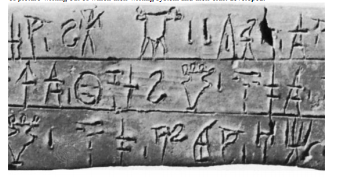
March 15, 2016 – Tom Palaima – Scribes, doodles, punning and cartooning in a Bronze Age bureaucracy
7-9 PM
Room M 101 (Bark room), 2 West 13th St., lobby level
Tom Palaima, a MacArthur fellow (1985-90) for his work in Aegean prehistory and early Greek language and culture, is director of the Program in Aegean Scripts and Prehistory and Robert M. Armstrong professor of Classics at the University of Texas at Austin. He has lectured, written and taught extensively on the subjects of ancient writing systems, the reconstruction of ancient culture, decipherment theory, Greek language, war and violence studies, ancient religion, ethnicity, feasting ritual and kingship ideology, song as an important means of communicating social criticism, and the music of Bob Dylan, Willie Nelson and Woody Guthrie. Tonight he will discuss the doodles and distractions of the human beings who wrote in the Linear B script on clay tablets in the late Greek Bronze Age (1400-1200 BCE) and the tradition of picture-writing out of which their writing system and their craft developed.

March 29, 2016 – Ted Wiggins – Optical Hopscotch: Tricks of perception in experimental animation
7-9 PM
Room M 101 (Bark room), 2 West 13th St., lobby level
Filmmaker and software developer Ted Wiggin will discuss tricks of perception used by 20th century experimental filmmakers, their evocative potential, and impact on contemporary independent animation. Ted Wiggins is a filmmaker and software developer who strives to bend the computer towards traditional animation and analog techniques. His films attempt to show rational systems that transcend their own logic. After graduating from RISD in 2011, he moved to New York and now works at Hornet Inc. Ted also makes software for non objective filmmaking, which is user friendly, versatile and freely available online.
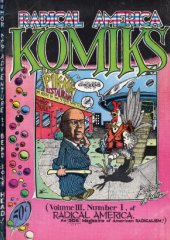
April 5, 2016 – Paul Buhle on “TEN YEARS OF NON-FICTION COMICS”
7-9 PM
Room M 101 (Bark room), 2 West 13th St., lobby level
My notion of where I began and have done, touching on work with the 1970s Bay Area oldtimers, WW3, new generations, etc. co-editor of DRAWN TO CHANGE (Between the Lines Press). Publisher of Radical America Komiks (1969), and editor of several journals with an interest in comics, Paul Buhle will explore the phase of nonfiction comics from his own re-entry in 2005 and a dozen volumes since. Harvey Pekar, Howard Zinn, Spain Rodriguez, Sharon Rudahl, Peter Kuper, Sabrina Jones, Nick Thorkelson and even Ben Katchor among others are part of this story. His books include: From the Lower East Side to Hollywood: Jew in American Popular Culture, The Beats: A Graphic History (with Harvey Pekar), Wobblies!: A Graphic History of the Industrial Workers of the World (with Nicole Schulman), The Art of Harvey Kurtzman: The Mad Genius of Comics (with Denis Kitchen), Marxism in the United States: Remapping the History of the American Left, Tender Comrades: A Backstory of the Hollywood Blacklist (with Patrick McGilligan), Encyclopedia of the American Left (with Mari Jo Buhle and Dan Georgakis), Dangerous Woman: The Graphic Biography of Emma Goldman (with Sharon Rudahl and Alice Wexler), Lincoln for Beginners (with Sharon Rudahl and Eric Foner), History and the New Left: Madison Wisconsin, 1950-1970, The American Radical (with Mari Jo Buhl, Harvey J. Kaye and Eric Foner), Blacklisted: The Film Lover’s Guide to the Hollywood Blacklist (with Dave Wagner), Students for a Democratic Society: A Graphic History (with Harvey Pekar), Jews and American Comics: An Illustrated History of an American Art Form, A People’s History of American Empire (with Howard Zinn and Mike Konopacki), Radical Hollywood: The Untold Story Behind America’s Favorite Movies (with David Wagner), C.L.R. James: The Artist As Revolutionary, Taking Care of Business: Samuel Gompers, George Meany, Lane Kirkland, and the Tragedy of American Labor, FDR and the New Deal For Beginners (with Sabrina Jones and Harvey Pekar), Hide in Plain Sight: The Hollywood Balcklistees in Film and Television (with Dave Wagner), The Immigrant Left in the United States (with Dan Georgakas), A Very Dangerous Citizen: Abraham Lincoln Polonsky and the Hollywood Left (with Dave Wagner), Marxism in the USA: From 1870 to the Present, (editor), Jews and American Popular Culture (editor), Images of American Radicalism (with Edmund B. Sullivan), Robin Hood: People’s Outlaw and Forest Hero: A Graphic Guide (with Chris Hutchinson), Insurgent Images: The Agitprop Mural of Mike Alewitz (with Mike Alewitz and Martin Sheen), C.L. R. James’s Caribbean (with Paget Henry), Labor’s Joke Book, Tim Hector: A Caribbean Radical’s Story, Working for Democracy: American Workers from the Revolution to the Present (with Alan Dawley), and From the Knights of Labor to the New World Order: Essays on Labor and Culture.

April 12 – Sam Gross, on his career of producing non-politically correct cartoons
7-9 PM
Room M 101 (Bark room), 2 West 13th St., lobby level
Sam Gross was born in the Bronx and attended DeWitt Clinton High School, which at the time was an all-boys school. He attended City College, starting as a business major, transferring to accounting major, and finally majored in advertising. Gross ended up taking a lot of art and history courses. He began cartooning in 1962. His cartoons have appeared in numerous magazines, including Cosmopolitan, Esquire, Good Housekeeping, Harvard Business Review and The New Yorker. He was cartoon editor for National Lampoon and Parents Magazine. Gross also became involved in electronic publishing ventures with cartoons playing an important role.
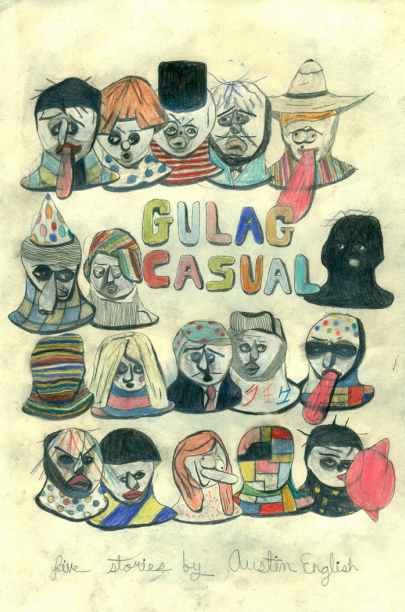
April 19, 2016 – Gulag Casual with Austin English
7-9 PM
Room M 101 (Bark room), 2 West 13th St., lobby level
English will talk about the different stories collected in the book, Gulag Casual, which is an overview of 5 years worth of cartooning. Austin English is a cartoonist and painter living in New York. He has published many books, including Christina and Charles and The Disgusting Room. His most recent effort, Gulag Casual published by 2d Cloud, debuts in April 2016.

April 26, 2016 – Kirk Demarais on Novelty Advertising in Comic Books
7-9 PM
Room M 101 (Bark room), 2 West 13th St., lobby level
Author Kirk Demarais will explore novelty advertising in comic books, examining the artwork and revealing the products behind the sensationalized ads. The presentation will include a focused look at the pioneering prank and magic manufacturer, S.S. Adams. Kirk Demarais is the author of Mail-Order Mysteries: Real Stuff from Old Comic Book Ads, and Life of the Party, a visual history book of the S.S. Adams prank and magic company, whom he also designed for. He is a freelance designer, illustrator, and writer who has created content for clients such as Hallmark, Warner Bros., The LA Times, The Weinstein Company, The Onion AV Club, Comic Art Magazine, BoingBoing.net, and Archie McPhee. Kirkʼs pop surrealist art is regularly featured at Gallery 1988 of Los Angeles. Heʼs also an adjunct professor at John Brown University where he teaches the history of art, advertising, and design.
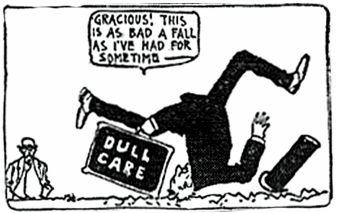
May 3, 2016 – The Waking Life of Winsor McCay
7-9 PM
Room M 101 (Bark room), 2 West 13th St., lobby level
An in-depth look at lesser-known comics by legendary artist Winsor McCay Kirsten McKinney will discuss the importance that Winsor McCay’s work for adults, specifically A Pilgrim’s Progress by Mister Bunion, plays in the oeuvre of this celebrated artist. Revered as an innovator in both comics and animation, McCay’s New York Evening Telegram comics are often overlooked but were filled with social commentary and telling personal references, shedding light on the man behind the legend. Kirsten A. McKinney is a graphic designer in Richmond, VA who has researched Winsor McCay’s work for adult audiences including Dream of the Rarebit Fiend, A Pilgrim’s Progress by Mister Bunion, and Poor Jake. She has compiled a complete catalog of A Pilgrim’s Progress by Mister Bunion, including scans from The New York Evening Telegram and full transcriptions.
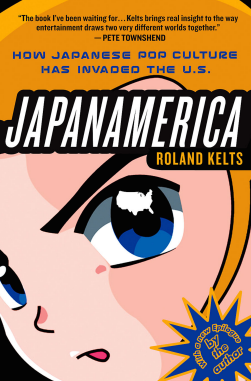 –
–
May 10, 2016 – Roland Kelts – The Hybrid Roots of Manga
7-9 PM
Room M 101 (Bark room), 2 West 13th St., lobby level
How the influx of American and other Western cultural artifacts after World War II evolved into a form of expression whose visual and narrative characteristics are today considered distinctively Japanese. Roland Kelts is the author of the critically acclaimed and bestselling Japanamerica. His articles, essays and fiction are published in The New Yorker, Time, the Wall Street Journal, The Village Voice, Newsweek Japan, Vogue, Cosmopolitan and The Japan Times, among others. He is also a frequent contributor to CNN, the BBC, NPR and NHK. He is a visiting scholar at Keio University and contributing editor of Monkey Business, Japan’s premier literary magazine. His forthcoming novel is called Access.
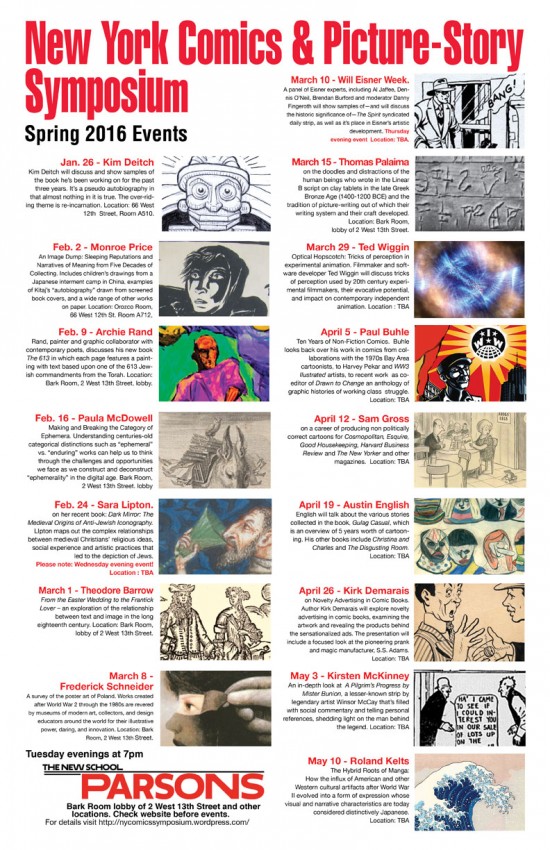
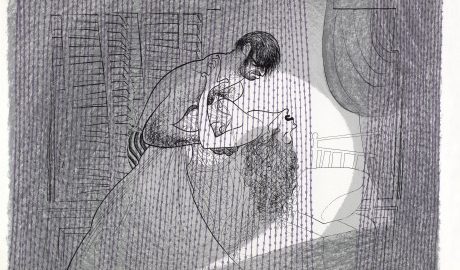







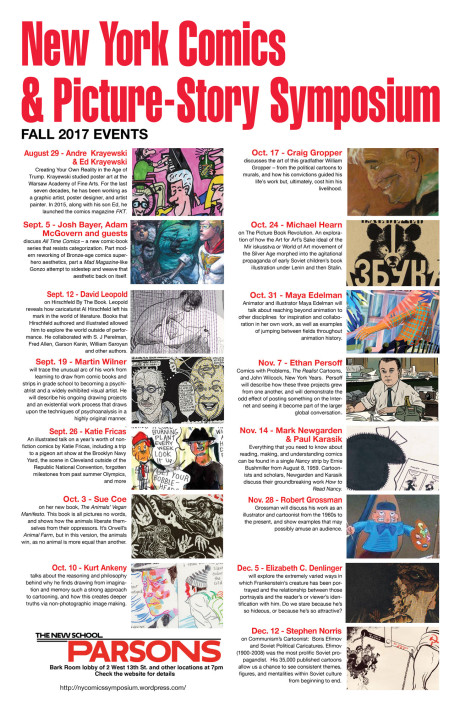














 –
–







 –
–
